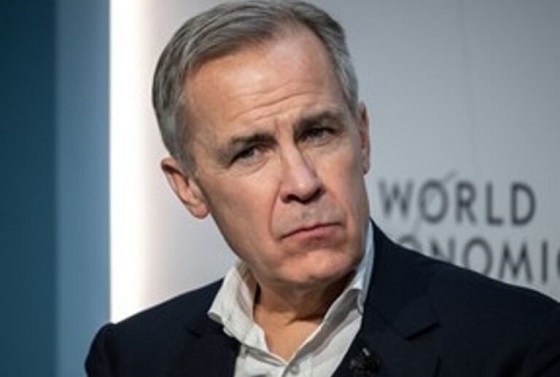Opinion
Female athletes are turning against gender-confused men dominating women’s sports

From LifeSiteNews
If female athletes came together and demanded, with one voice, that female sports be protected, they would be pushing at an open door.
What happens when obvious truths about the differences between the sexes are denied by the elites at the behest of the transgender movement? And what happens when female athletes discover that their rights mean less than the newly invented “rights” of trans-identifying men to invade their spaces?
We’ve seen the answer to that play out over the past few years. This month alone, a trans-identifying male beat his female competitors at an Oregon track meet by a full six seconds, with the video of him zipping across the finish line sparking outrage; a trans-identifying marathon runner announced that he will be competing in the full set of six marathon majors in Boston in the male, female and “non-binary” categories; and courts in West Virginia and Ohio ruled that trans-identifying males can compete on female sports teams.
In the meantime, U.K. culture secretary Lucy Frazer called for a ban on males in female sports after meeting with representatives of a number of female sports leagues, writing:
In competitive sport, biology matters. And where male strength, size and body shape gives athletes an indisputable edge, this should not be ignored. By protecting the female category, they can keep women’s competitive sport safe and fair and keep the dream alive for the young girls who dream of one day being elite sportswomen.
She concluded, “We must get back to giving women a level playing field to compete. We need to give women a sporting chance.” Refreshingly, she called on sporting bodies to take an “unambiguous position” on the matter.
That, of course, is common sense. What makes Frazer’s statements significant is that she does not, like most politicians trying to thread the needle by accepting transgender ideology but rejecting the inevitable conclusions thereof, make multiple references to “transgender women.” She instead refers to keeping male bodies out of female sports, much to the outrage of trans activists, who insist that males who identify as females are females, and thus have female bodies, because they said so.
Over the past several years, it has fallen largely to the few female sportswomen who dared to risk the opprobrium of the LGBT movement to speak for the majority and point out the unfairness of allowing males to invade their sporting domains; now, an increasing number are willing to speak out. A recent study conducted by Manchester Metropolitan and Swansea universities, published April 17 in the Journal of Sports Sciences, indicates that the majority of female athletes want women’s sports to be categorized by sex rather than “gender identity.”
Fifty-eight percent of respondents in the study of elite female athletes wanted categorization by biological sex; that rose to 77 percent among those classified as “world-class athletes” who had competed in Olympic or world championship finals. Researchers surveyed 175 “national, elite and world class female athletes – current and retired – from a range of sports and countries” and included “26 world champions, 22 Olympians and six Paralympians,” making it the largest study of its kind conducted thus far. A BBC Sports study last month found that over 100 elite U.K. female athletes “would be uncomfortable” with trans-identifying males competing in the female categories of their sports.
According to the study, there is one exception to the rule: the “majority of athletes competing in non-Olympic sports believe changing category should be allowed, with the highest rate of 74% among those in ‘precision’ sports such as archery.”
In short, the higher female athletes climb, the more likely they are to object to trans-identifying males competing in their categories. Most of these athletes, of course, remain unnamed. Imagine if they came out together and demanded, with one voice, that female sports be protected. It would constitute a cultural sea change – and I suspect the moment is right for them to do so. If they pushed, they would be pushing at an open door.
2025 Federal Election
The Cost of Underselling Canadian Oil and Gas to the USA
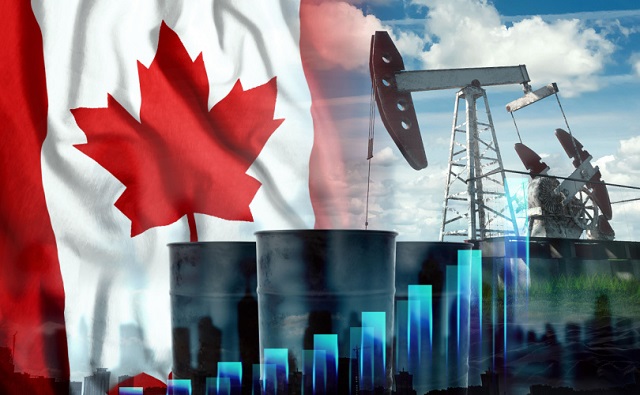
From the Frontier Centre for Public Policy
Canadians can now track in real time how much revenue the country is forfeiting to the United States by selling its oil at discounted prices, thanks to a new online tracker from the Frontier Centre for Public Policy. The tracker shows the billions in revenue lost due to limited access to distribution for Canadian oil.
At a time of economic troubles and commercial tensions with the United States, selling our oil at a discount to U.S. middlemen who then sell it in the open markets at full price will rob Canada of nearly $19 billion this year, said Marco Navarro-Genie, the VP of Research at the Frontier Centre for Public Policy.
Navarro-Genie led the team that designed the counter.
The gap between world market prices and what Canada receives is due to the lack of Canadian infrastructure.
According to a recent analysis by Ian Madsen, senior policy analyst at the Frontier Centre, the lack of international export options forces Canadian producers to accept prices far below the world average. Each day this continues, the country loses hundreds of millions in potential revenue. This is a problem with a straightforward remedy, said David Leis, the Centre’s President. More pipelines need to be approved and built.
While the Trans Mountain Expansion (TMX) pipeline has helped, more is needed. It commenced commercial operations on May 1, 2024, nearly tripling Canada’s oil export capacity westward from 300,000 to 890,000 barrels daily. This expansion gives Canadian oil producers access to broader global markets, including Asia and the U.S. West Coast, potentially reducing the price discount on Canadian crude.
This is more than an oil story. While our oil price differential has long been recognized, there’s growing urgency around our natural gas exports. The global demand for cleaner energy, including Canadian natural gas, is climbing. Canada exports an average of 12.3 million GJ of gas daily. Yet, we can still not get the full value due to infrastructure bottlenecks, with losses of over $7.3 billion (2024). A dedicated counter reflecting these mounting gas losses underscores how critical this issue is.
“The losses are not theoretical numbers,” said Madsen. “This is real money, and Canadians can now see it slipping away, second by second.”
The Frontier Centre urges policymakers and industry leaders to recognize the economic urgency and ensure that infrastructure projects like TMX are fully supported and efficiently utilized to maximize Canada’s oil export potential. The webpage hosting the counter offers several examples of what the lost revenue could buy for Canadians. A similar counter for gas revenue lost through similarly discounted gas exports will be added in the coming days.
What Could Canada Do With $25.6 Billion a Year?
Without greater pipeline capacity, Canada loses an estimated (2025) $25.6 billion by selling our oil and gas to the U.S. at a steep discount. That money could be used in our communities — funding national defence, hiring nurses, supporting seniors, building schools, and improving infrastructure. Here’s what we’re giving up by underselling these natural resources.

342,000 Nurses
The average annual salary for a registered nurse in Canada is about $74,958. These funds could address staffing shortages and improve patient care nationwide.
Source

39,000 New Housing Units
At an estimated $472,000 per unit (excluding land costs, based on Toronto averages), $25.6 billion could fund nearly 94,000 affordable housing units.
Source
About the Frontier Centre for Public Policy
The Frontier Centre for Public Policy is an independent Canadian think-tank that researches and analyzes public policy issues, including energy, economics and governance.
Automotive
Hyundai moves SUV production to U.S.

 MxM News
MxM News
Quick Hit:
Hyundai is responding swiftly to 47th President Donald Trump’s newly implemented auto tariffs by shifting key vehicle production from Mexico to the U.S. The automaker, heavily reliant on the American market, has formed a specialized task force and committed billions to American manufacturing, highlighting how Trump’s America First economic policies are already impacting global business decisions.
Key Details:
-
Hyundai has created a tariffs task force and is relocating Tucson SUV production from Mexico to Alabama.
-
Despite a 25% tariff on car imports that began April 3, Hyundai reported a 2% gain in Q1 operating profit and maintained earnings guidance.
-
Hyundai and Kia derive one-third of their global sales from the U.S., where two-thirds of their vehicles are imported.
Diving Deeper:
In a direct response to President Trump’s decisive new tariffs on imported automobiles, Hyundai announced Thursday it has mobilized a specialized task force to mitigate the financial impact of the new trade policy and confirmed production shifts of one of its top-selling models to the United States. The move underscores the gravity of the new 25% import tax and the economic leverage wielded by a White House that is now unambiguously prioritizing American industry.
Starting with its popular Tucson SUV, Hyundai is transitioning some manufacturing from Mexico to its Alabama facility. Additional consideration is being given to relocating production away from Seoul for other U.S.-bound vehicles, signaling that the company is bracing for the long-term implications of Trump’s tariffs.
This move comes as the 25% import tax on vehicles went into effect April 3, with a matching tariff on auto parts scheduled to hit May 3. Hyundai, which generates a full third of its global revenue from American consumers, knows it can’t afford to delay action. Notably, U.S. retail sales for Hyundai jumped 11% last quarter, as car buyers rushed to purchase vehicles before prices inevitably climb due to the tariff.
Despite the trade policy, Hyundai reported a 2% uptick in first-quarter operating profit and reaffirmed its earnings projections, indicating confidence in its ability to adapt. Yet the company isn’t taking chances. Ahead of the tariffs, Hyundai stockpiled over three months of inventory in U.S. markets, hoping to blunt the initial shock of the increased import costs.
In a significant show of good faith and commitment to U.S. manufacturing, Hyundai last month pledged a massive $21 billion investment into its new Georgia plant. That announcement was made during a visit to the White House, just days before President Trump unveiled the auto tariff policy — a strategic alignment with a pro-growth, pro-America agenda.
Still, the challenges are substantial. The global auto industry depends on complex, multi-country supply chains, and analysts warn that tariffs will force production costs higher. Hyundai is holding the line on pricing for now, promising to keep current model prices stable through June 2. After that, however, price adjustments are on the table, potentially passing the burden to consumers.
South Korea, which remains one of the largest exporters of automobiles to the U.S., is not standing idle. A South Korean delegation is scheduled to meet with U.S. trade officials in Washington Thursday, marking the start of negotiations that could redefine the two nations’ trade dynamics.
President Trump’s actions represent a sharp pivot from the era of global corporatism that defined trade under the Obama-Biden administration. Hyundai’s swift response proves that when the U.S. government puts its market power to work, foreign companies will move mountains — or at least entire assembly lines — to stay in the game.
-

 2025 Federal Election1 day ago
2025 Federal Election1 day agoTrump Has Driven Canadians Crazy. This Is How Crazy.
-
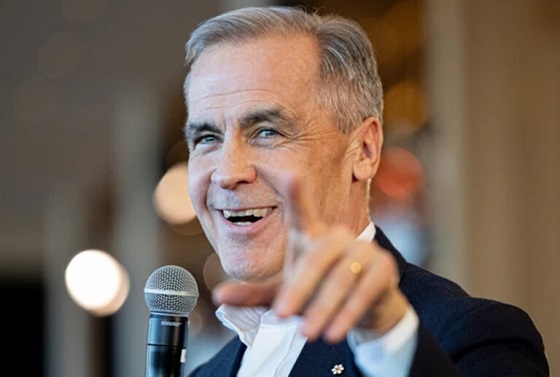
 2025 Federal Election2 days ago
2025 Federal Election2 days agoCarney’s Hidden Climate Finance Agenda
-

 2025 Federal Election1 day ago
2025 Federal Election1 day agoThe Anhui Convergence: Chinese United Front Network Surfaces in Australian and Canadian Elections
-

 Automotive21 hours ago
Automotive21 hours agoHyundai moves SUV production to U.S.
-
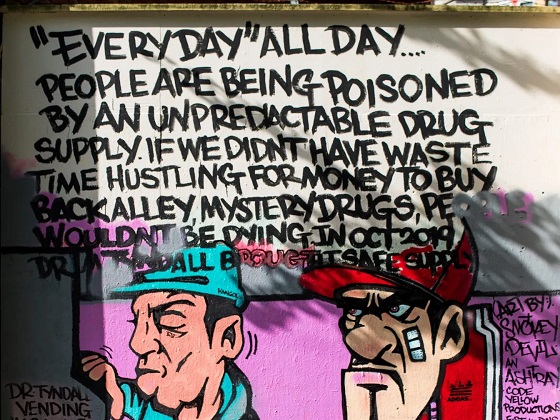
 2025 Federal Election2 days ago
2025 Federal Election2 days agoStudy links B.C.’s drug policies to more overdoses, but researchers urge caution
-

 Entertainment1 day ago
Entertainment1 day agoPedro Pascal launches attack on J.K. Rowling over biological sex views
-

 2025 Federal Election2 days ago
2025 Federal Election2 days agoWhen it comes to pipelines, Carney’s words flow both ways
-
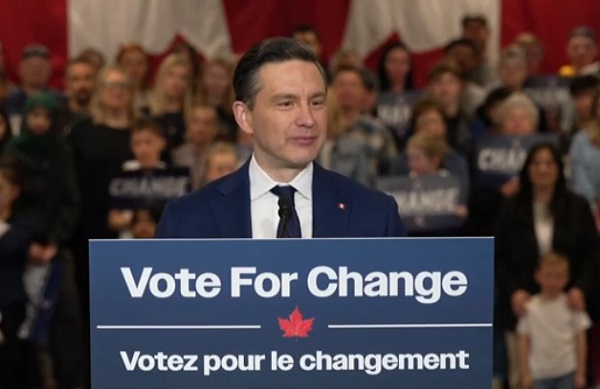
 2025 Federal Election17 hours ago
2025 Federal Election17 hours agoAs PM Poilievre would cancel summer holidays for MP’s so Ottawa can finally get back to work




